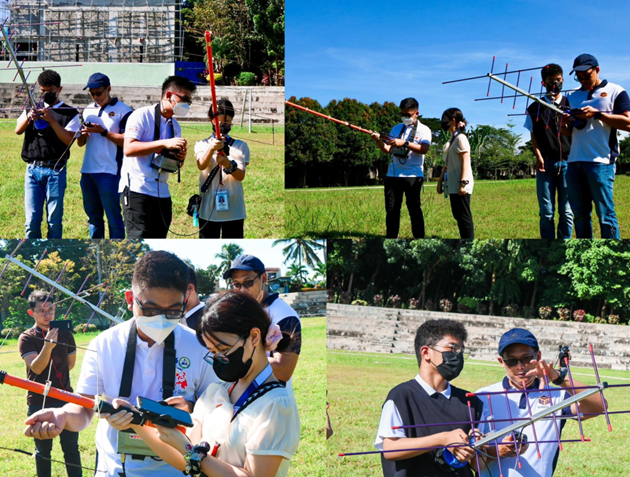The Philippine Space Agency (PhilSA) celebrated the 2022 World Space Week with the theme Space and Sustainability at the Philippine Science High School - Southern Mindanao Campus (PSHS-SMC) in Davao City on 07 October 2022. The activity showcased the Philippines’ capability in space science and technology applications (SSTA) through its satellite program. It featured a live demonstration on the use of our own amateur radio satellite, the DIWATA-2 (PO-101) satellite launched in 2018.

John Kyl Cortez DV9JC of AMSAT Philippines and Dr. Izrael Bautista DV1PUI of PhilSA used inexpensive ham radio equipment and improvised antenna to demonstrate to the learners of the Philippine Science High School - Southern Mindanao Campus how to receive the DIWATA-2 satellite’s signal in real-time as it passes overhead in Davao City, Philippines. Photo: DOST Region XI
John Kyl Cortez (DV9JC) of AMSAT Philippines, Inc. (DX1O) together with PhilSA satellite engineer Dr. Izrael Bautista (DV1PUI) conducted the satellite communications demo in Davao City for the learners of Philippine Science High School - Southern Mindanao Campus (PSHS-SMC). Other satellite operators from various parts of the country also participated: Anthony Guiller Urbano (DU1AU) in Cavite, Jharwin Barrozo (DV2JB) in Pangasinan, Percival Padilla (DV1XWK) in Manila, Tasmi Datumanong (DU9JJY) in Cotabato, Peter Soliva (DV8CER) in Dipolog, Engr. Ronald Navarro (4I1AGI) in Laguna, JX Mella (4I1BKZ) in Quezon City, and Carlito Monte (DV4ZAR) in Camarines Sur. Neighboring countries were also heard: JA6PL and JS6DRQ from Japan and YD8VHV from Indonesia. The successful communications demo using the DIWATA-2 satellite highlights the capability of our country to develop a reliable amateur radio satellite–a communications device in space which could be used when ground-based infrastructures such as the Internet and cellular communications become unavailable.
With guidance from licensed PARA amateur radio satellite operators, the DOST Region XI, and the Philippine Space Agency, participants from PSHS-SMC learned how a satellite contact is established as exchange of information and greetings among radio enthusiasts were heard when DIWATA-2 satellite passed over Davao City. The satellite communications demo showcased our ground-to-satellite communications capability by accessing the amateur radio unit (ARU) of the DIWATA-2 (PO-101) satellite using inexpensive ham radio equipment and an improvised satellite antenna.